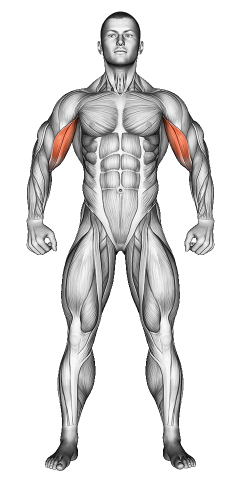Barbell Drag Curl: Video Tutorial & Exercise Guide

Written By: Claude Michael
Updated: Oct 13, 2024
| Workout | Barbell Drag Curl |
| Primary Muscle Group | Biceps |
| Secondary Muscle Group | Forearms |
| Equipment Required | Barbell |
| Force Type | Pull |
| Mechanics | Isolation |
| Exercise Type | Strength |
| Difficulty | Beginner |
Barbell Drag Curl: Video Tutorial & Exercise Guide
- 1.Barbell Drag Curl: Muscle Groups
- -1.1Primary Muscle Group
- -1.2Secondary Muscle Group
- 2.Barbell Drag Curl: Step-by-Step Guide
- 3.Barbell Drag Curl: Overview
- 4.Barbell Drag Curl: Benefits
- 5.Barbell Drag Curl: Pro Tips & Advanced Techniques
- 6.Barbell Drag Curl: Progression Plan
- 7.Barbell Drag Curl: Frequently Asked Questions (FAQs)
Secondary Muscles Group
Barbell Drag Curl: Step-by-Step Guide
- Step 1: Stand with your feet shoulder-width apart, holding a barbell with an underhand (supinated) grip. Your hands should be about shoulder-width apart on the bar.
- Step 2: Keep your chest up, shoulders back, and core engaged. Let the barbell hang down in front of your thighs with your arms fully extended.
- Step 3: Begin the movement by dragging the barbell upward, keeping it as close to your body as possible. Focus on pulling the bar by driving your elbows backward rather than lifting with your forearms.
- Step 4: Continue dragging the barbell up along your torso until it reaches chest height, feeling a strong contraction in your biceps.
- Step 5: Slowly lower the barbell back to the starting position, maintaining control throughout the movement. Repeat for the desired number of reps.
Barbell Drag Curl: Overview
The Barbell Drag Curl is an isolation exercise that targets the biceps, specifically focusing on the long head of the bicep muscle. Unlike traditional curls, this variation minimizes forearm involvement and emphasizes the upper part of the bicep, resulting in greater peak contraction.
The dragging motion ensures constant tension on the biceps throughout the entire range of motion, helping to build strength and definition in the upper arms. It’s a great alternative to standard curls for anyone looking to add variety to their bicep workout.
Barbell Drag Curl: Benefits
The Barbell Drag Curl effectively isolates the biceps, improving muscle size and strength, particularly in the upper part of the biceps. By reducing the involvement of the forearms and shoulders, it maximizes bicep engagement, leading to better muscle activation and growth.
This exercise also helps enhance the mind-muscle connection, allowing you to focus on the contraction and control of the biceps. It can be a valuable addition to a workout routine focused on developing the arms, especially for building the peak of the bicep.
Barbell Drag Curl: Pro Tips & Advanced Techniques
To get the most out of the Barbell Drag Curl, focus on driving your elbows back rather than swinging your arms. Keep the barbell as close to your body as possible to maintain tension on the biceps throughout the movement. For an added challenge, slow down the lowering (eccentric) phase to increase time under tension. Avoid using too much weight, as this can shift the focus away from the biceps and onto the shoulders.
the Barbell Drag Curl: Progression Plan
Beginner
Intermediate
Advanced
Barbell Drag Curl: Frequently Asked Questions (FAQs)
What muscles do Barbell Drag Curls target?
+The Barbell Drag Curl primarily targets the biceps, with an emphasis on the long head, but also engages the forearms and brachialis to a lesser extent.
Are Barbell Drag Curls suitable for beginners?
+Yes, Barbell Drag Curls are suitable for beginners as long as the weight is kept light and the focus is on mastering form. Start with a lower weight and gradually increase it as you get comfortable with the movement.
How often should I do Barbell Drag Curls?
+You can include Barbell Drag Curls 1-2 times per week in your arm workout routine. Be sure to allow adequate recovery time between sessions to avoid overtraining your biceps.
What common mistakes should I avoid?
+Avoid using momentum or swinging your arms, as this takes the focus away from the biceps. Keep the bar close to your body and drive your elbows back for proper form.
Can I use other equipment for drag curls?
+Yes, you can perform drag curls with dumbbells or an EZ curl bar as alternatives to the barbell. These variations can provide a slightly different angle of resistance.
Share
Don’t Wish for It, Work for It – Join the FlexXP Newsletter Today!
Thank you for signing up for the FlexXP Newsletter!
This site is protected and the Google Privacy Policy and Terms of Service apply.

